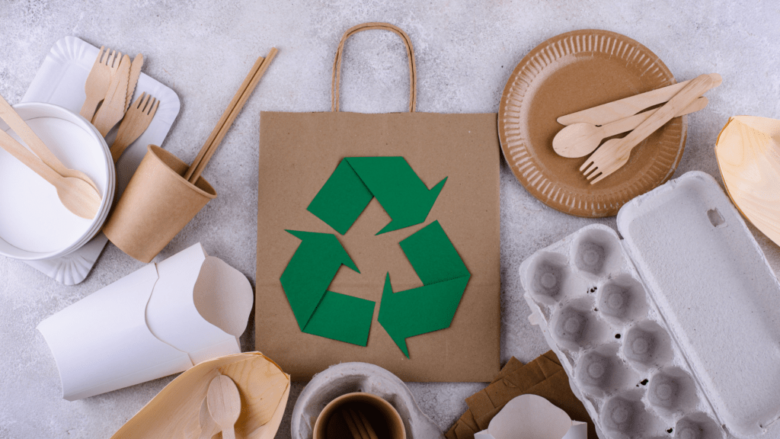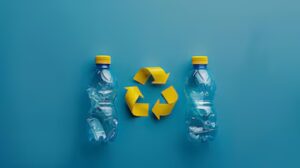Environmental protection is more important than ever, and the way we package is undergoing a dramatic shift. Eco-friendly packaging, also known as sustainable packaging, is quickly becoming a better option than traditional packaging. More and more businesses, from small shops to large online retailers, are making the switch. This shift is not only beneficial for the environment but also changes the way businesses operate and how people make purchasing decisions. By using materials that are recyclable, compostable, or reusable, eco-friendly packaging helps reduce the amount of waste that ends up in landfills and oceans. This phenomenon phenomenon isn’t a fad; it’s a significant step toward a cleaner, healthier world. This growing awareness is leading to new approaches in design, material selection, and production that will change the way we package and dispose of products in the future.
The Evolution of Eco-Friendly Packaging:
Eco-friendly packaging has become incredibly popular recently, largely due to growing environmental awareness. People are now more aware of the environmental impact of their purchases and are actively seeking environmentally friendly products. This shift in shopping habits is encouraging businesses to embrace green initiatives. Companies that previously used conventional plastic packaging are now exploring biodegradable materials, plant-based plastics, and new compostable options.
The global market for eco-friendly packaging is expected to be worth billions of dollars in the coming years, suggesting that this shift is more than just a marketing ploy but a real solution to a global crisis. This demand has also led to some ingenious solutions, such as packaging made from edible mushrooms and compostable seaweed. Governments are tightening regulations on single-use plastics, forcing businesses to rethink their plans. Companies pioneering eco-friendly packaging demonstrate their commitment to the environment and are at the forefront of legislation, earning the trust of environmentally conscious consumers.
Eco-Friendly Materials Lead the Way:
The materials used are essential for sustainable packaging. Recycled paper and cardboard are two of the most popular options due to their affordability, biodegradability, and recyclability. Bioplastics made from renewable resources like sugarcane or cornmeal are emerging as a promising alternative to petroleum-based plastics. These materials degrade faster and have a smaller carbon footprint. Another innovative idea is mushroom packaging, which is fully compostable and breaks down naturally within weeks, leaving no waste.
Seaweed packaging is also gaining popularity because it is biodegradable, edible, and nutritious. It’s an innovative and environmentally friendly approach to food packaging. The focus is on the transition to safe, reusable, and biodegradable materials that don’t pollute water or land. By investing in such solutions, companies can meet customer demands while simultaneously reducing their environmental impact. This shift in packaging materials reduces waste and stimulates a new industry focused on environmentally friendly product production.
Why is Eco-Friendly Packaging Good for Business?
Choosing eco-friendly packaging is not only good for the environment but also for your business. People today are more inclined to buy from brands that align with their values, and environmental awareness is crucial. By using eco-friendly packaging, companies can strengthen their brand image, build trust, and cultivate a loyal customer base. Governments worldwide are also implementing stricter regulations on plastic waste. By making changes now, companies can avoid future compliance issues and potential fines.
Using eco-friendly packaging can also save you money in the long run. For example, using recyclable materials and choosing the right size packaging can reduce shipping costs and resource consumption. Furthermore, companies that implement sustainable technologies often receive positive media attention and word-of-mouth referrals, giving them an edge over their competitors. In a market where customer demands are constantly changing, offering eco-friendly solutions can help companies stand out, increase revenue, and contribute to global sustainability.
How Eco-Friendly Packaging Reduces Waste:
Traditional packaging generates enormous amounts of waste, making it one of today’s greatest environmental challenges. Plastic and other human-made materials can take hundreds of years to degrade, which is extremely harmful to the ecosystem. Using eco-friendly packaging that is biodegradable, compostable, or recyclable can address this problem. These materials can break down naturally, keeping landfills and oceans clean, protecting wildlife, and preventing hazardous chemicals from leaching into soil and water.
Many eco-friendly packages are reusable, reducing the need for disposable items. This shift reduces visible waste and addresses the hidden environmental costs of sourcing, producing, and disposing of items. Reducing packaging waste has significant long-term benefits: it reduces greenhouse gas emissions, conserves resources, and creates a circular economy where materials are reused rather than discarded. Eco-friendly packaging is, therefore, a proactive way to reduce waste, benefiting both the environment and society.
Conclusion:
Eco-friendly packaging is more than just a marketing trend; it’s a significant step in addressing one of the world’s primary environmental challenges. As businesses and consumers become increasingly aware of the environmental impact of traditional packaging, its adoption is growing. These solutions offer numerous benefits, such as lowering carbon emissions, reducing landfill waste, and strengthening brand image and customer loyalty. Additionally, they foster a circular economy by encouraging the reuse and recycling of items rather than their disposal.
Eco-friendly packaging demonstrates genuine concern for the environment. It can be made from biodegradable plant-based polymers, compostable mushroom fibers, or recycled paper. New materials, smart design, and responsible manufacturing are essential for the future of packaging. Companies that make changes now can protect the planet and enhance their brand value in the long term. One day, eco-friendly packaging will no longer be an option but the norm in responsible and successful global markets.
FAQs:
1. What is eco-friendly packaging made of?
You can make eco-friendly packaging from materials like recycled paper, bioplastics made from cornmeal or sugarcane, mushroom fibers, or seaweed. These materials can break down naturally or be reused without harming the environment.
2. Why is eco-friendly packaging vital?
Traditional packaging generates significant pollution and waste that ends up in landfills. Eco-friendly packaging protects the environment by reducing damage, encouraging recycling, and reducing the use of toxic substances.
3. Is eco-friendly packaging pricier than conventional packaging?
Sustainable packaging may be a little pricier to produce, but in the long run, it can save you money by reducing waste, speeding up shipping, and keeping customers coming back.
4. Can all businesses use eco-friendly packaging?
Yes, it’s very flexible and can be applied across many industries, including food, cosmetics, electronics, and e-commerce. Designs can be adapted to different needs.
5. What can individuals do to promote eco-friendly packaging?
People can choose products with eco-friendly packaging, recycle packaging properly, and encourage companies to be more environmentally friendly through their purchases and feedback.




